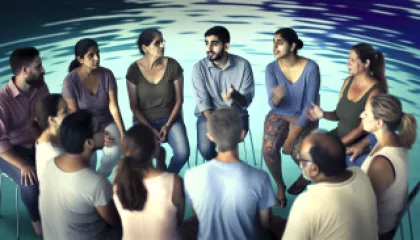Embracing Sensory Processing Diversity: An Opinionated Perspective
Embracing Sensory Processing Diversity: An Opinionated Perspective
In a world that often seeks conformity and standardization, the topic of sensory processing diversity is one that deserves greater attention and understanding. As an individual with a unique perspective on this subject, I strongly believe that embracing the diversity of sensory experiences is not only a fundamental human right but also a vital step towards creating a more inclusive and compassionate society.
Defining Sensory Processing Diversity
Sensory processing is the neurological process that allows individuals to take in, organize, and make sense of the various sensory stimuli they encounter daily. This includes touch, sound, sight, smell, taste, and the awareness of one's own body movements and position in space. However, not everyone experiences these sensations in the same way. Sensory processing diversity refers to the spectrum of how individuals perceive and respond to sensory input, with some being hypersensitive, others hyposensitive, and many falling somewhere in between.
For some, the sensation of a light touch may be overwhelming, while for others, it may go unnoticed. The sound of a bustling crowd may be energizing for one person but utterly draining for another. These differences in sensory processing can have a profound impact on an individual's daily life, affecting their ability to concentrate, communicate, and navigate the world around them.
The Importance of Acceptance and Accommodation
In a society that often values conformity and "normalcy," individuals with sensory processing differences can face significant challenges. They may be labeled as "quirky," "difficult," or even "disabled," leading to social isolation, misunderstanding, and a lack of support.
However, it is crucial that we move beyond these narrow perspectives and embrace the richness and diversity of sensory experiences. By acknowledging and accepting the unique needs and preferences of individuals with sensory processing differences, we can create a more inclusive and empathetic environment that allows everyone to thrive.
This acceptance can take many forms, from providing sensory-friendly environments with reduced noise and light levels, to offering personalized accommodations in educational and work settings. It may also involve educating the broader public about sensory processing diversity, challenging harmful stereotypes, and fostering a culture of understanding and empathy.
The Benefits of Embracing Sensory Processing Diversity
When we embrace sensory processing diversity, we unlock a world of benefits, not just for those with unique sensory needs but for the entire community. By creating environments and systems that cater to a wide range of sensory preferences, we promote a sense of belonging, reduce stress and anxiety, and empower individuals to reach their full potential.
Moreover, recognizing and accommodating sensory processing diversity can have far-reaching positive impacts. It can lead to improved mental health outcomes, enhanced social interactions, and increased academic and professional success for those with sensory processing differences. Additionally, it can foster a more empathetic and understanding society, where diversity is celebrated and everyone is given the opportunity to thrive.
Practical Strategies for Embracing Sensory Processing Diversity
Embracing sensory processing diversity is not just a lofty ideal; it can be implemented through practical, tangible strategies. Here are a few examples:
- Sensory-Friendly Environments: Designing spaces that are sensitive to the needs of individuals with sensory processing differences, such as offering quiet rooms, adjustable lighting, and noise-cancelling options.
- Personalized Accommodations: Providing individualized support and accommodations in educational, work, and community settings, such as allowing the use of noise-cancelling headphones, fidget toys, or flexible seating arrangements.
- Sensory Education and Awareness: Implementing training and education programs that help the broader community understand sensory processing diversity, fostering empathy and acceptance.
- Collaborative Approaches: Encouraging open dialogue and collaboration between individuals with sensory processing differences, their families, and healthcare/education professionals to develop tailored solutions.
- Inclusive Design and Technology: Incorporating sensory considerations into the design of products, services, and technologies to ensure they are accessible and accommodating for a wide range of sensory needs.
Embracing the Richness of Sensory Diversity
As we navigate the complexities of sensory processing diversity, it is important to remember that each individual's experience is unique and valid. Rather than viewing sensory differences as deficits, we must celebrate them as part of the rich tapestry of human experience.
By embracing and accommodating sensory processing diversity, we not only empower those with unique sensory needs but also enrich the lives of everyone around them. We open the door to a world where creativity, innovation, and empathy thrive, and where every individual is given the opportunity to reach their full potential.
Conclusion: A Call to Action
In conclusion, embracing sensory processing diversity is not just a moral imperative, but a necessary step towards building a more inclusive and equitable society. As we continue to navigate the complexities of this issue, let us remain committed to fostering understanding, providing accommodation, and celebrating the richness of human diversity.
Together, we can create a world where sensory processing differences are recognized, respected, and celebrated as a unique and valued part of the human experience. It is time to embrace the diversity of sensory processing and unlock the boundless potential that lies within.
The opinions expressed in this article are my own and do not necessarily reflect the views of any organization or institution. I encourage readers to engage in open and thoughtful discussions about sensory processing diversity, as we work collectively to build a more inclusive and compassionate world.
- Wyatt Walker






